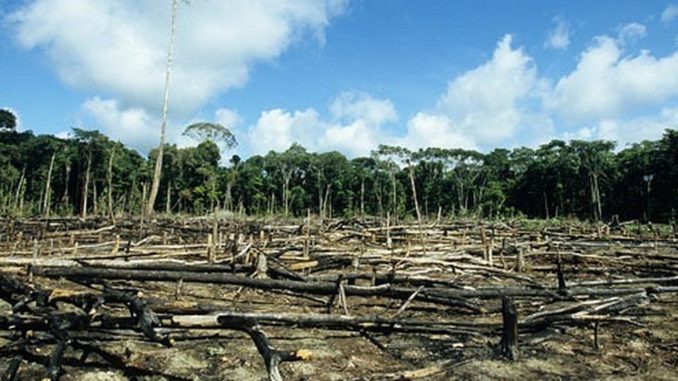
The division of earth’s habitats into smaller and more isolated patches has left the planet with no real wild forests.
This points to major trouble for a number of the world’s ecosystems and the plants and animals living in them.
In a study funded by the National Science Foundation, it was revealed that 70 percent of existing forest lands are within a half-mile of the forest edge, where human encroachment or agricultural influences can cause any number of harmful effects – like the losses of plants and animals.

BYPASS THE CENSORS
Sign up to get unfiltered news delivered straight to your inbox.
You can unsubscribe any time. By subscribing you agree to our Terms of Use
Latest Video
The published study tracked seven major experiments on five continents that examine habitat fragmentation and found that fragmented habitats reduced the diversity of plants and animals by 13 to 75 percent, with the largest negative effects found in the smallest and most isolated fragments of habitat.
NC State University reports:
The study, led by North Carolina State University and involving about two dozen researchers across the globe, is reported today in a paper published in Science Advances.
The researchers assembled a map of global forest cover and found very few forest lands unencumbered by some type of human development.
“It’s no secret that the world’s forests are shrinking, so this study asked about the effects of this habitat loss and fragmentation on the remaining forests,” said Dr. Nick Haddad, William Neal Reynolds Distinguished Professor of Biological Sciences at NC State and the corresponding author of the paper.
“The results were astounding. Nearly 20 percent of the world’s remaining forest is the distance of a football field – or about 100 meters – away from a forest edge. Seventy percent of forest lands are within a half-mile of a forest edge. That means almost no forest can really be considered wilderness.”
The study also examined seven existing major experiments on fragmented habitats currently being conducted across the globe; some of these experiments are more than 30 years old.
Covering many different types of ecosystems, from forests to savannas to grasslands, the experiments combined to show a disheartening trend: Fragmentation causes losses of plants and animals, changes how ecosystems function, reduces the amounts of nutrients retained and the amount of carbon sequestered, and has other deleterious effects.
“The initial negative effects were unsurprising,” Haddad said. “But I was blown away by the fact that these negative effects became even more negative with time. Some results showed a 50 percent or higher decline in plant and animals species over an average of just 20 years, for example. And the trajectory is still spiraling downward.”
Haddad points to some possible ways of mitigating the negative effects of fragmentation: conserving and maintaining larger areas of habitat; utilizing landscape corridors, or connected fragments that have shown to be effective in achieving higher biodiversity and better ecosystem function; increasing agricultural efficiency; and focusing on urban design efficiencies.
“The key results are shocking and sad,” Haddad said. “Ultimately, habitat fragmentation has harmful effects that will also hurt people. This study is a wake-up call to how much we’re affecting ecosystems – including areas we think we’re conserving.”
The study was supported by the National Science Foundation.


